Golden syrup dumplings (Chè trôi nước) or floating dumplings (bánh trôi)/ veggie dumpling (bánh chay) in Ho Xuan Huong’s poem are two dishes with close similarity in the processing methods and names, yet each bears a different meaning. If floating dumplings are offered to the ancestors on their altar on Cold Food Holiday to commemorate our deceased kinfolks, then golden syrup dumplings are prepared on Winter Solstice Festival to symbolize reunion. Whichever story we believe in, Chè trôi nước remains a flavorful dish which could be found at any market. Therefore, varying this dish is not easy, since its flavor has lain deep in the memory of those seeking to enjoy it. However, Chef Ngoc Nghia brought to the Golden Spoon Awards of 2013 a novel, tasteful version: red bean-green tea Che. Actually the name should be “red bean-green tea dumpling Che”, as it is both savory and having the effect of winning with flying colors. In fact, she has attained Runner-Up position!
RED BEAN-GREEN TEA DUMPLING CHE
Print ThisIngredients
- 150g red bean
- 400g glutinous rice flour
- 10g green tea powder
- 300g rock sugar
- 10g sugar
- 50g ginger
- 4 liters water
- 50g roasted white sesame
- 10g fresh green tea leaves
- 5g salt
- 100ml coconut milk
Instructions
PROCESS
Preparation: Rinse the red beans thoroughly, soak in water overnight or in 8-10 hours. Rinse the green tea leaves and drain them well in a colander. Rinse the ginger and grill till cooked.
Make the filling: Rinse the soaked red beans under running water, put them in a pot; pour the water in to cover the beans, add 4g salt, cook on stove heat until the beans are soft then take them out and set cool. Use a colander or fine mesh strainer to separate the husk from the beans and mash the cooked beans. Place this into a non-stick pan, add coconut milk with 1g salt and 10g sugar. Stir constantly and evenly on low heat until the beans become chewy soft and somewhat dry. Split the bean batter into small lumps of bite size.

Make the syrup: Dissolve the rock sugar in 1.5 liters of water in a pot on medium heat, add ginger, and bring up to a simmer in 15-20 minutes until the liquid has reduced into a syrup, then add green tea leaves and cook for a further 5 minutes to obtain the tea aroma and the light yellow color, strain the syrup to discard the tea dregs. Keep the syrup on stove on low heat.
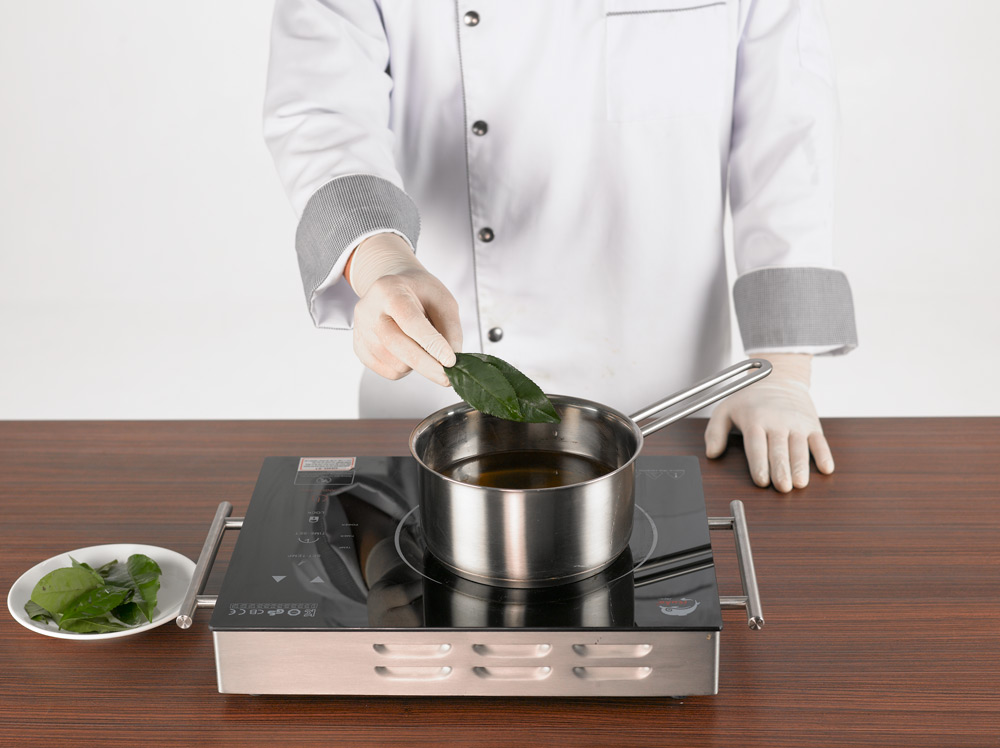
Mix the flour: Mix well the glutinous flour with green tea powder in a bowl, gradually pour in 300ml water, knead till the mixture become a fine, gummy soft dough, not too dry nor too soggy. Let the dough rest for 10 minutes for evenly rising. Boil the remaining 1.2 liters of water in a pot.
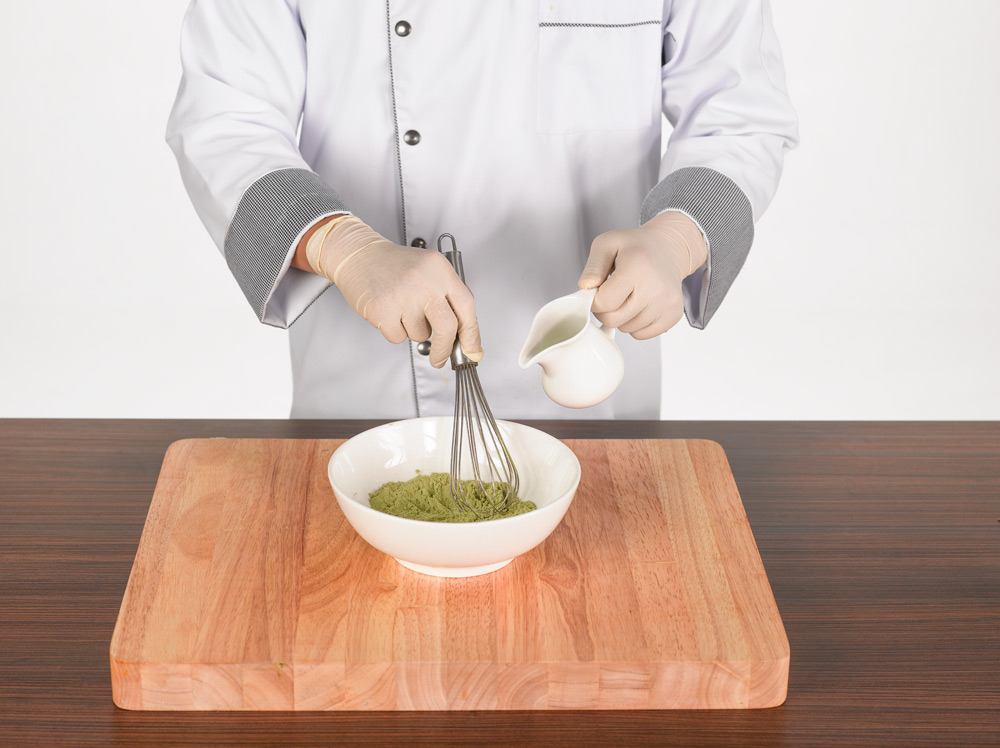
Cook the Che: After the dough has rested, pull off a golf-ball-sized piece of dough and stretch it into a thin sheet between your fingers, place the filling inside, wrap and roll into a round dumpling ball, then drop the dumpling into the boiling water until the ball floats to the surface and the dough becomes clear, which means it is now cooked. Take it out and put it into the hot syrup. Repeat the process in turn with all the remaining dough and filling. Cook for 5 more minutes for the dumpling balls to absorb the syrup.
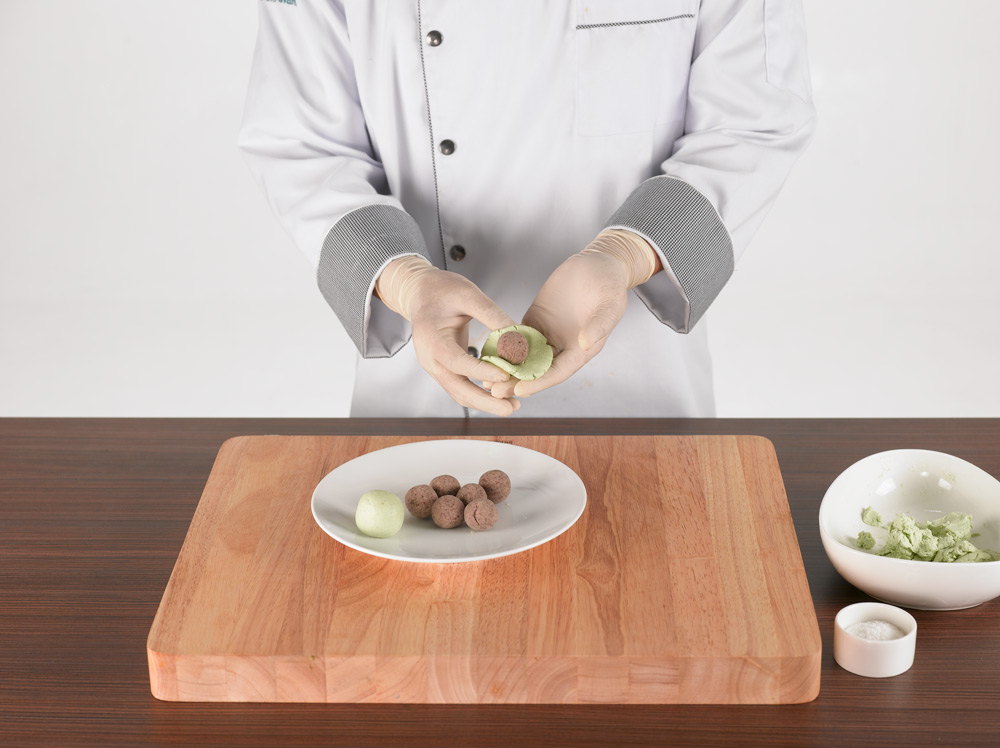
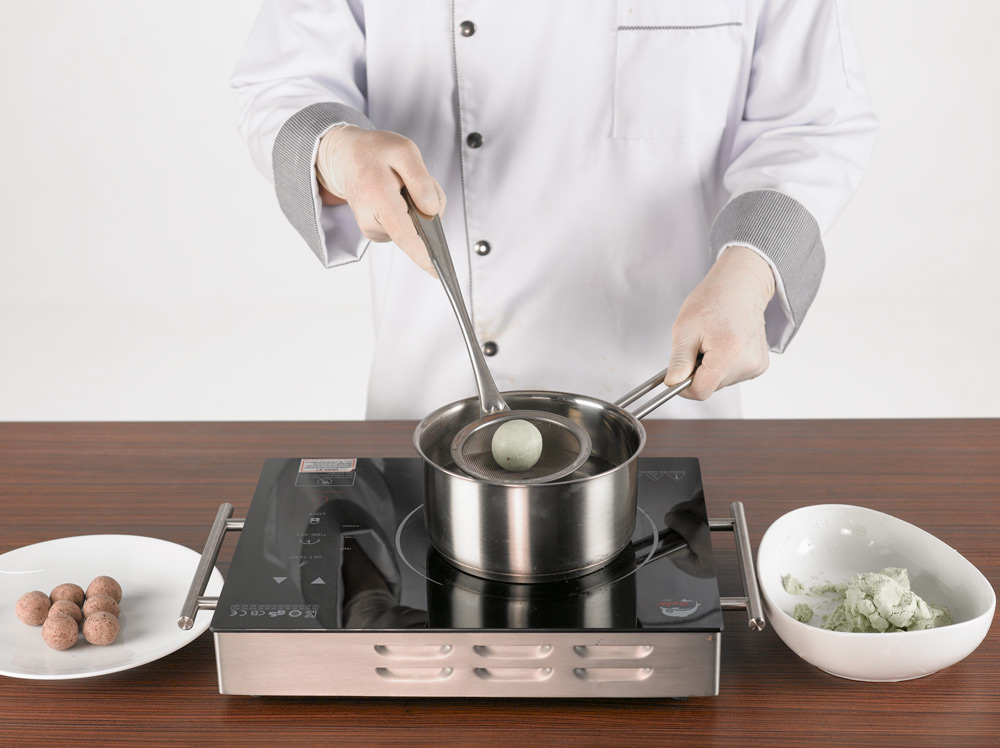
PRESENTATION
Ladle a few dumplings with some syrup into a bowl, sprinkle roasted sesame on top, serve hot.
QUALITY CHECK
The Che should have a delicate sweetness with grilled ginger fragrance, a bit acrid of tea leaf flavor; the glutinous dough should be smooth and gummy soft; the filling should taste mealy and buttery and not coarse; the dumpling balls should be evenly rounded.
TIPS
The beans, after being well cooked, must be refined through a fine mesh strainer to avoid the coarse husk texture when consumed.
The syrup must be boiled on low heat till condensed; put the green tea leaves in for around 5 minutes then take them out to keep the syrup from getting too acrid.
The water should be poured in gradually when you knead the dough; if it is too dry, more water can be added.
It depends on the type of flour that absorbs more or less water to adjust the volume of water when kneading.
The red bean can be soaked with soda powder or lye water for quicker softening.
EFFECTS OF THIS DISH
It is useful for persons with asthenic body syndrome, hyperhidrosis (or sweaty palms syndrome), stomach and duodenum ulcers, diarrhea due to spleen Qi deficiency, frequent urination at night, vestibular disorders, cerebral circulatory insufficiency, pregnant women having nausea, people with beriberi, coughing with plenty of thin clear phlegm, etc. Note: Green tea is not recommended for infants, sickly children, elderly people, patients in convalescence, people with spleen Qi deficiency, persons with a heated body state or those who have heated phlegm, have a fever, spit yellow phlegm when coughing, have yellow skin, and stuffy stomach.
NUTRITION FACTS

Notes
TRAN NGOC NGHIA Tien Loc Wedding Restaurant (Dong Nai Province) Runner-up in the Golden Spoon Awards 2013





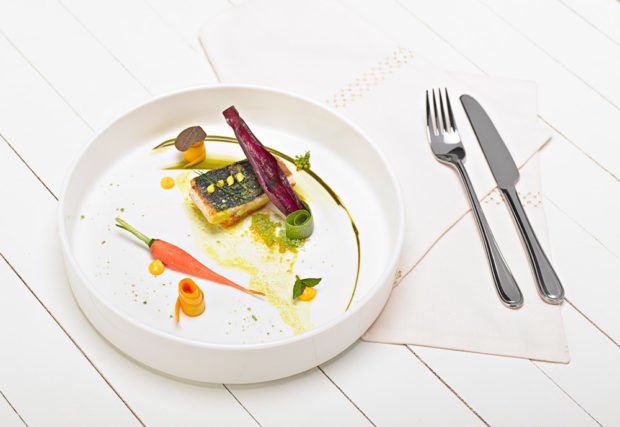
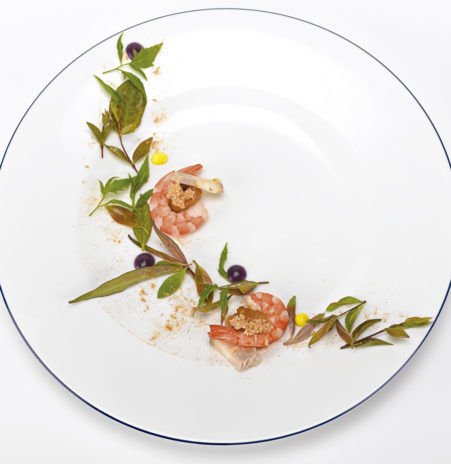
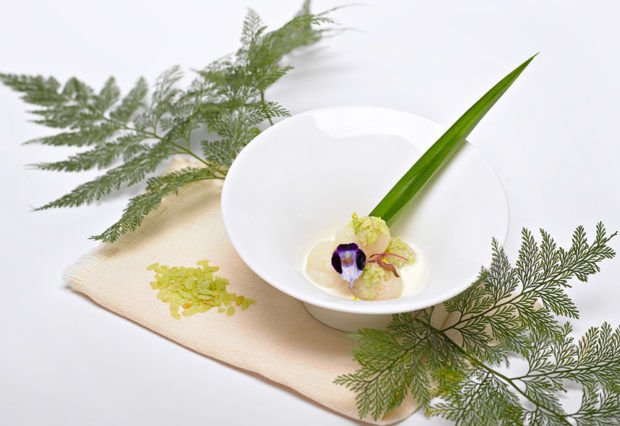
No Comments